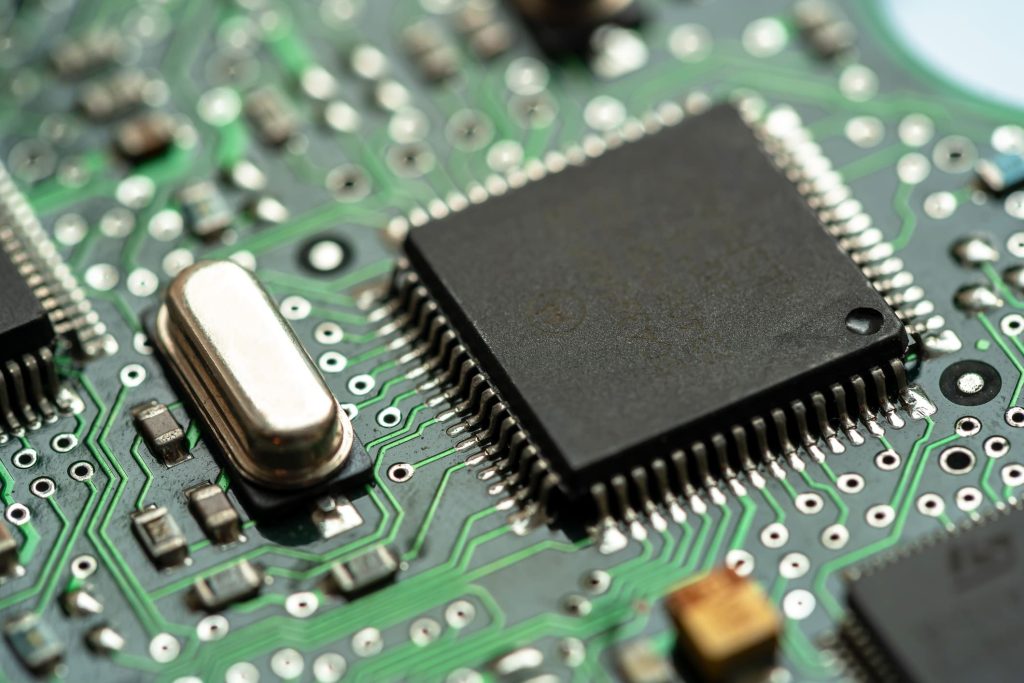
Microcontrollers are small but powerful chips used in many electronic devices. They help control functions in devices such as household appliances, cars, and medical devices. These small chips are essential in the modern world because they make everyday things smarter and more efficient. A microcontroller (MCU) includes a processor, memory, and the ability to connect to other parts of the system, allowing it to control a variety of devices. In the guide, we will discuss what is a microcontroller, how it works, and its types. So let’s get started.
Types of Microcontrollers
There are different types of microcontrollers, each with their strengths. The choice of MCU depends on the complexity of the task and how much processing power is needed. Below are the most common types of microcontrollers:
1. 8-bit Microcontrollers
8-bit microcontrollers are simple and cost-effective. They can process 8 bits of data at a time. These are used for tasks that do not require much power or memory. They usually have small memory (2KB to 64KB) and are great for basic tasks.
Applications:
- Home appliances (such as microwave ovens, and washing machines)
- Simple control systems
- Small gadgets
2. 16-bit Microcontrollers
16-bit microcontrollers can handle 16 bits of data at a time. They are more powerful than 8-bit MCUs and can store more memory (4KB to 128KB). They are used in projects that require a balance of cost and performance.
Applications:
- Cars (to manage electronic control units)
- Robots
- Small business systems
3. 32-bit Microcontrollers
32-bit microcontrollers are more powerful and have more memory (128KB to several megabytes). They are used in more complex devices because they can perform tasks faster and handle more data simultaneously. These MCUs are used in systems that require multitasking, real-time processing, or networking.
Applications:
- Smart home systems (such as automated lights, and thermostats)
- Wearable devices (such as fitness trackers)
- Factory control systems
4. ARM-Based Microcontrollers
ARM-based microcontrollers use the ARM architecture, known for being both powerful and energy-efficient. These MCUs come in a variety of sizes and can be used for a variety of tasks. They are beneficial for devices that need to conserve battery life.
Applications:
- Mobile phones and tablets
- Internet of Things (IoT) devices
- Car systems
5. Digital Signal Controllers (DSC)
Digital signal controllers are a combination of microcontrollers and digital signal processors. They are used for tasks that require real-time data processing and complex calculations.
Applications:
- Audio and video processing
- Communication devices
- Controlling electric motors
Key Features of Microcontrollers
Microcontrollers have some important features that make them suitable for controlling various devices:
1. Central Processing Unit (CPU)
The CPU is the part of the microcontroller that performs the functions. It runs the program and handles all the tasks required by the system. For battery-powered devices, the CPU is often designed to use very little power.
2. Memory
Microcontrollers have memory built in. These include:
- Flash memory: Stores the program or instructions for the MCU.
- RAM (Random Access Memory): Temporarily stores data that the MCU is using while it is working.
- EEPROM: Stores small amounts of data that need to be saved when the power is off.
3. Input/Output (I/O) Ports
I/O ports allow the microcontroller to connect to other parts of the system, such as sensors, motors, and displays. These ports can handle digital signals (on/off) or analog signals (variable values).
4. Peripherals
Microcontrollers come with various built-in features called peripherals, such as:
- Timers (to count time or manage events)
- Communication ports (to connect to other devices)
- Analog-to-digital converters (to read signals from the real world)
Uses of Microcontrollers
Microcontrollers are used in many different industries because they are small, cheap, and efficient. Here are some areas where microcontrollers play a major role:
1. Consumer Electronics
Microcontrollers are found in almost every consumer electronic product. They are used in devices such as:
- Smartphones
- Smart TVs
- Wearable devices (such as fitness trackers)
2. Automotive Industry
Cars today use many microcontrollers for various functions. They are used for:
- Engine control
- Safety features (such as airbags)
- Information systems (music, navigation)
- Lighting control
3. Industrial Automation
In factories and plants, microcontrollers control machines and processes. They help things run smoothly by managing:
- Conveyor belts
- Robotic arms
- Temperature control
- Speed control
It is also used in other IoT (Internet of Things) devices, which make everyday objects smarter.
4. Communication Systems
Microcontrollers are used in communication devices to send and receive data, such as:
- Wireless communication devices
- Network routers and switches
- GPS systems
They help manage the flow of information and ensure that data is transferred without errors.
Conclusion
Microcontrollers are essential components in today’s electronics. They are small, powerful, and cost-effective, making them suitable for a wide range of applications, from simple household appliances to complex industrial systems. Whether it is a smartphone, a car, or a medical device, microcontrollers help make things smarter and more efficient.
At Magnificette, we understand the importance of microcontrollers in modern electronics, providing innovative solutions for various industries.





Leave a Reply